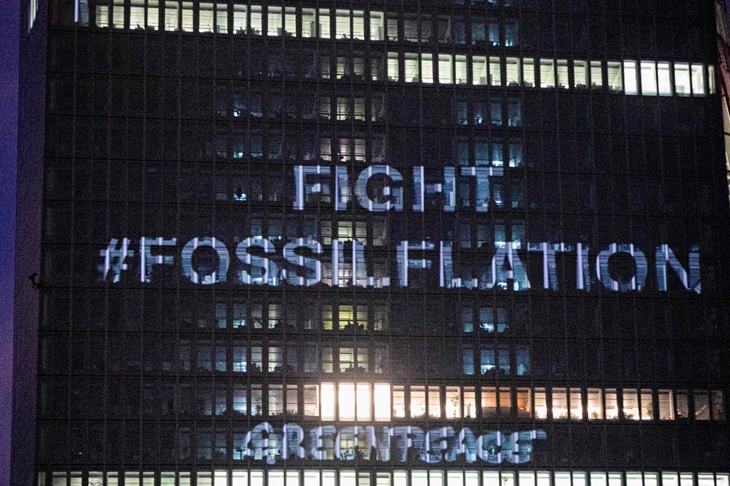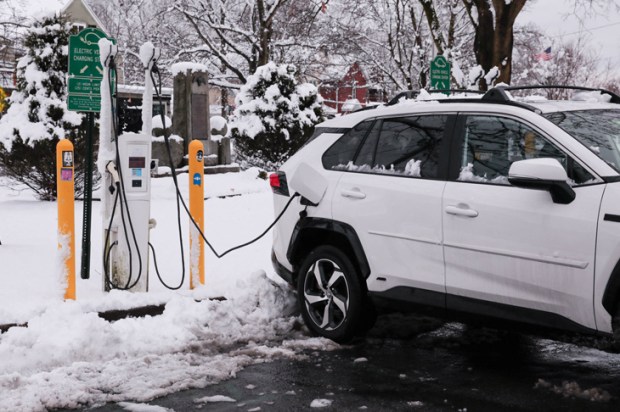For decades consumers have been promised renewable energy that will be greener, cheaper and more reliable than the power delivered by the derided fossil-fuel generators. Instead, after billions if not trillions of dollars investment in the likes of wind farms and solar panels, consumers worldwide find they must pay much higher energy bills in return for a service that is far less reliable – all for a reduction in emissions that can have no appreciable effect on climate.
A major case in point is the vast increase in the number of times the Australian National Energy Market Operator (AEMO) is being forced to intervene in generator operations, to ensure stability of the east coast grid. In a submission to the Australian Energy Regulator on a focus paper on Wholesale Market Performance Monitoring late last year, the Australian Energy Council (AEC) notes that before 2017 the AEMO rarely issued what are known as intervention orders.
The AEC, which represents the biggest operators in the energy market, says that now these orders are almost commonplace and have become seemingly the default way of managing the market. These orders may involve directing a gas generator to remain in the market, or a diesel generator to continue operating because the AEMO has realised that there is not enough reserve capacity. The safety net if something goes wrong has become too thin, and more firm generation has to be made available.
Although the AEC does not say so, the cause of this instability is the shift away from reliable coal-fired generations towards weather-dependent renewable energy, particularly in the wind farm capital state of South Australia which is the subject of many of the notices, not to mention a number of wholesale price spikes in excess of $5,000 a megawatt hour. Instead, understandably, the AEC’s focus is on the cost of all these interventions, and that no one seems to be ensuring that the underlying problem is fixed through commercial arrangements – that is by power providers being paid to make additional firm power generation available when required.
As matters stand, Australian consumers may be in a bad way when it comes to paying for energy, but at least their lot has improved in recent years. A graph in the annual retail markets report produced by the Australian Competition and Consumer Commission for 2020-21 shows that power prices spiked in 2018 at about 80 per cent plus above 2005 prices in real terms. At last count they were about 60 per cent or so above 2005 prices, which is better but still far above the 20 per cent increase in real incomes over the same period, with much of the recent reduction being due to a surge in investment in networks working its way through the system.
The increasing level of intermittent renewables on the system – an AEMO interactive site shows that about three per cent of power came from solar in the past 12 months and ten per cent from wind – has certainly not reduced consumer bills, despite the blather from activists. But they also have not added much to costs directly. The main effect of renewables in Australia has been to help drive the old, efficient, reliable brown coal plants out of business. The closure of so much reliable capacity has driven up wholesale power prices.
However, the Australian experience with power prices remains rosy compared with that of European consumers, particular when much colder winter temperatures mean that consumers have to pay higher energy bills or freeze in their own homes.
In the UK, a price cap on power bills has shielded consumers from the worst of a spike in wholesale prices, although that cap has been still set high enough for them to complain bitterly. Another major effect of the cap has been to push a lot of smaller power suppliers out of business, as they are unable to pass on price increases to consumers. The price cap is expected to be increased by perhaps 50 per cent in the northern spring.
This European-wide spike in wholesale electricity prices increasing consumer distress is, in turn, the result of Russia putting Europe low on the list of customers for its gas – and the gas that does make it through the connecting pipelines will vanish if Russia invades the Ukraine. However, European countries have also gone out of their way to block development of other sources of gas such as through fracking, and even to close still viable nuclear and coal power plants all due to often marginal if not imaginary green concerns.
The major LNG producers, Australia, Qatar and the US, are potential sources of gas, but LNG sold overseas in the fast-expanding market for the fuel are typically purchased under long-term supply arrangements. As prices have been high for many months LNG production trains are operating at full capacity, with all production sold forward. There is little to spare for European consumers.
One fact noticeably absent in all of this is the immense renewable energy assets which the UK and Germany in particular have built up over years of screaming by green activists that doom is just around the corner. This is in part because solar power does not count for much in the dead of winter in Europe and wind farms have been affected by a wind drought. UK academics have noted that 2021 was an unusually still one, with UK power company SSE reporting that its renewable assets produced 32 per cent less power than expected.
Although last year was unusual, calm periods, or wind droughts as they are now called, associated with high pressure systems are a feature of European weather – a feature that has not been a factor in economic life since the days of sailing ships.
With less wind than expected and gas at a premium, both Germany and Britain have restarted coal plants – although coal remains a small part of the UK’s generating capacity – and the roller coaster ride of coal prices continues with a major upswing in price.
An assessment of electricity prices for EU countries by the union’s statistical body Eurostat for the first half of last year found that green-mad Germany had the region’s highest electricity prices, followed by Denmark which has been boasting about its use of renewables. Renewables-mad Spain is in fifth place.
All of this is a world away from the airy confidence of activists that the adoption of renewable energy adds up to a new industrial revolution of clean, cheap energy while coal is consigned to the rubbish bind of history. Instead, renewables are increasingly likely to be seen as a footnote in coal’s grand march through history.
Got something to add? Join the discussion and comment below.
Get 10 issues for just $10
Subscribe to The Spectator Australia today for the next 10 magazine issues, plus full online access, for just $10.
Mark Lawson has written extensively on energy. Contact Mark at www.clearvadersname.com
You might disagree with half of it, but you’ll enjoy reading all of it. Try your first month for free, then just $2 a week for the remainder of your first year.














Comments
Don't miss out
Join the conversation with other Spectator Australia readers. Subscribe to leave a comment.
SUBSCRIBEAlready a subscriber? Log in